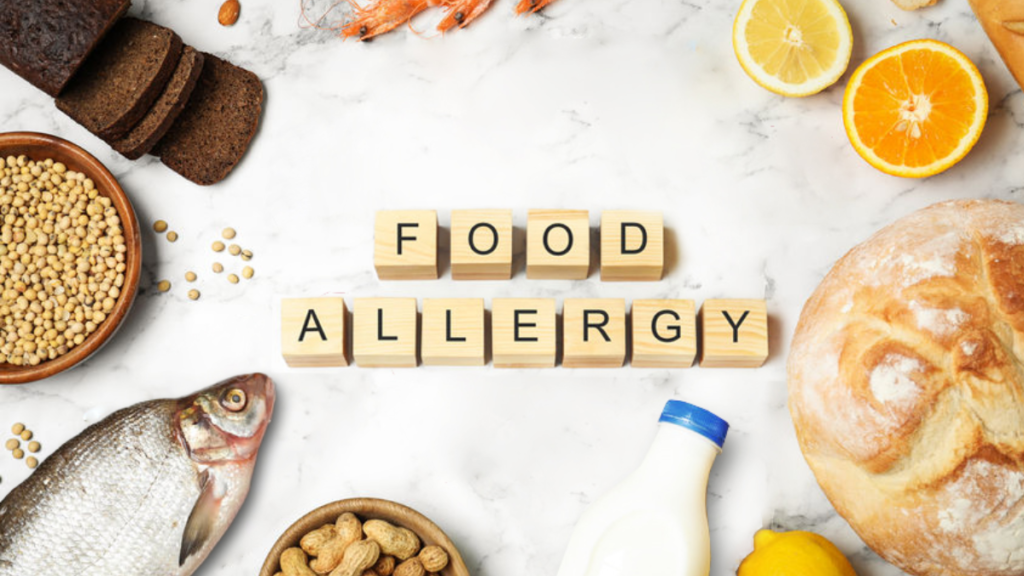Introduction:
Food allergies are increasingly common and can pose serious health risks. If you’ve been diagnosed with a food allergy, it’s essential to know how to manage it effectively to ensure your safety and well-being. This guide will provide practical steps and tips to help you live a full life while managing your food allergy.
Understanding Food Allergies

A food allergy occurs when your immune system mistakenly identifies a specific food as harmful and triggers a defensive response. Common symptoms include hives, swelling, digestive issues, and, in severe cases, anaphylaxis—a potentially life-threatening reaction. Common allergens include peanuts, tree nuts, milk, eggs, wheat, soy, fish, and shellfish.
Step 1: Get a Definitive Diagnosis

If you suspect you have a food allergy, consult an allergist. They will perform tests, such as skin prick tests or blood tests, to confirm the allergy and identify the specific allergens.
Step 2: Educate Yourself
Understanding your allergy is crucial. Learn to read food labels meticulously. The FDA requires manufacturers to list common allergens on food packaging, but being aware of less obvious sources is equally important. For example, egg proteins can be found in some pasta and wine may contain traces of fish.
Step 3: Develop an Allergy Action Plan
Work with your allergist to create an allergy action plan. This plan should detail:
- The specific allergens you need to avoid
- Signs and symptoms of an allergic reaction
- Step-by-step instructions on what to do if you experience a reaction, including when to use an epinephrine auto-injector (e.g., EpiPen)
Step 4: Carry Emergency Medication
Always carry your prescribed medications, including an epinephrine auto-injector, antihistamines, and any other emergency treatments. Make sure you and those close to you know how to use the auto-injector correctly.
Step 5: Inform Others
Make sure family, friends, coworkers, and caregivers are aware of your food allergy. Educate them on how to recognize the signs of an allergic reaction and how to administer emergency treatment if necessary. Wearing a medical alert bracelet can also provide critical information in an emergency.
Step 6: Be Cautious When Dining Out
Eating out can be challenging with a food allergy, but it’s manageable with precautions:
- Research restaurants beforehand and choose those with good reputations for handling food allergies.
- Communicate your allergy to restaurant staff clearly and politely. Ask about ingredient lists and food preparation practices.
- When in doubt, opt for simple dishes with fewer ingredients to reduce the risk of cross-contamination.
Step 7: Cook Smart at Home
When cooking at home, follow these tips to avoid cross-contamination:
- Clean cooking surfaces and utensils thoroughly.
- Store allergenic and non-allergenic foods separately.
- Use separate cutting boards and knives for allergenic foods.
Step 8: Stay Informed and Updated
Food labeling laws and allergen information can change, so stay informed through reliable sources such as food allergy organizations and medical professionals. Joining a support group can also provide valuable information and emotional support.
Step 9: Educate Your Children
If your child has a food allergy, teach them about their condition from a young age. Empower them to speak up about their allergy and understand the importance of not sharing food.
Step 10: Travel Prepared
When traveling, plan ahead:
- Pack safe snacks and meals.
- Learn how to say “I have a food allergy” in the local language.
- Research hospitals and emergency services at your destination.
Conclusion
Living with a food allergy requires vigilance and preparation, but it doesn’t mean you have to miss out on life’s pleasures. By educating yourself, planning ahead, and communicating effectively, you can manage your food allergy safely and confidently. Always remember, when in doubt, err on the side of caution to keep yourself safe.

